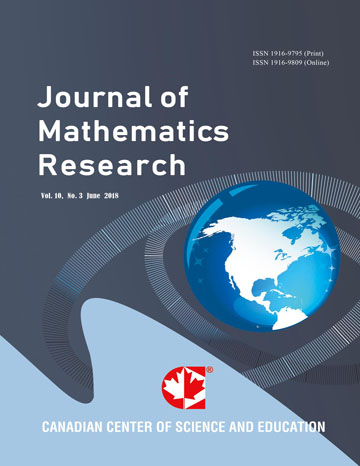Spatial Dynamics in Prey-Predator Model With Holling type II and Strong Allee Effect in Prey
- Linus Nyarusanda Kisoma
Abstract
In this study, a spatiotemporal prey-predator mathematical model incorporating a Holling type II functional response and a strong Allee effect in the prey population was developed to explore the dynamics of species undergoing diffusion and migration. The stability of the model without diffusion and migration was analyzed, and the influence of the Allee effect on bifurcations was investigated. The spatial dynamics of the model were further examined to understand how diffusion and migration impact the onset of Turing instability under zero-flux boundary conditions. The findings reveal that the inclusion of the Allee effect can generate complex spatial patterns. While diffusion promotes the emergence of Turing instability, advection does not lead to such instabilities.
- Full Text:
 PDF
PDF
- DOI:10.5539/jmr.v16n6p48
Index
- ACNP
- Aerospace Database
- BASE (Bielefeld Academic Search Engine)
- Civil Engineering Abstracts
- CNKI Scholar
- DTU Library
- EconPapers
- Elektronische Zeitschriftenbibliothek (EZB)
- EuroPub Database
- Google Scholar
- Harvard Library
- IDEAS
- Infotrieve
- JournalTOCs
- MathGuide
- MathSciNet
- Open policy finder
- RePEc
- ResearchGate
- Scilit
- Technische Informationsbibliothek (TIB)
- The Keepers Registry
- UCR Library
- Universe Digital Library
- WorldCat
Contact
- Sophia WangEditorial Assistant
- jmr@ccsenet.org
